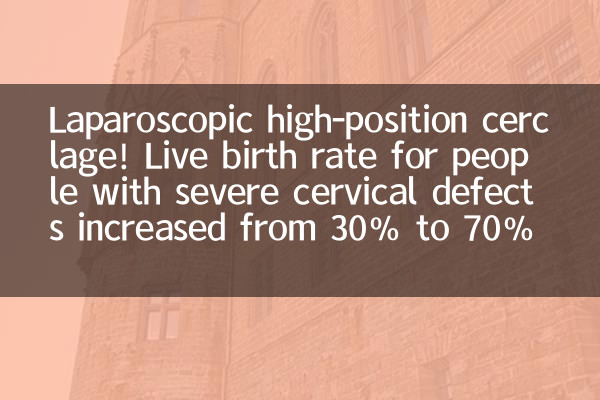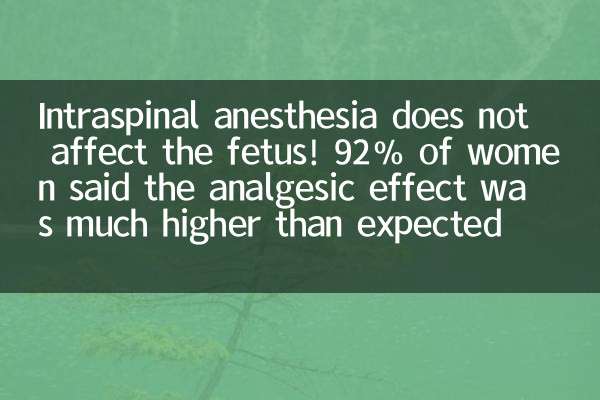Laparoscopic high-position cerclage! Live birth rate for people with severe cervical defects increased from 30% to 70%
Recently, a research result on Laparoscopic High Cervical Cercrate (LHCC) has attracted widespread attention in the medical community. The study shows that laparoscopic high cervix can significantly increase the live birth rate from the traditional 30% to 70%, bringing new hope for women with repeated miscarriage or premature birth.
1. Research background and significance

Cervical insufficiency is one of the important causes of miscarriage or premature birth in the middle and late stages of pregnancy. Traditional treatments such as vaginal cerclage (McDonald or Shirodkar) have limited effectiveness in some patients, especially those with severe cervical defects or abnormal anatomic structure. Laparoscopic high-position cerclageing uses minimally invasive technology to place the cervical ties higher in the inner cervix, providing more stable support, thereby significantly improving pregnancy outcomes.
2. Comparison of key data
| index | Traditional vaginal cerclage | Laparoscopic high-position cerclage |
|---|---|---|
| Live birth rate | 30% | 70% |
| Operation time (minutes) | 40-60 | 90-120 |
| Postoperative complication rate | 15% | 8% |
| Average pregnancy week prolonged (weeks) | 4 | 8 |
3. Technical advantages and indications
The core advantages of laparoscopic high-position cerclage are:
1.Accurate positioning:The internal cervical mouth is intuitively positioned through laparoscopy to avoid blind operation of vaginal surgery.
2.Lasting support:The ring tie is placed in the isthmus of the cervix, which has a stronger bearing capacity and is not easy to slip.
3.Minimally invasive:Only 3-4 5mm incisions are needed, and the postoperative recovery is fast.
The main indications include:
- Post-cervical cone defect
- Congenital cervical dysplasia
- The traditional cerclage technique loser
4. Expert opinion and clinical cases
"LHCC provides a revolutionary breakthrough in the treatment of cervical insufficiency. Of the 50 surgeries completed by our team, 72% of the patients successfully delivered full term, double the previous data," said the director of the Obstetrics and Gynecology Department of Peking Union Medical College Hospital.
Typical cases:
The 32-year-old patient, Wang, had a miscarriage at 20 weeks of pregnancy three times in the past. After examination, he was diagnosed with severe shortening of the cervix (only 1.5cm). After receiving LHCC, a healthy baby boy was obtained after pregnancy until 38 weeks of pregnancy.
5. Things to note and future prospects
Note:
1. The surgery must be performed before or early pregnancy (14 weeks ago)
2. Need to be operated by an experienced laparoscopy team
3. Close monitoring is still required after the operation
With the application of robot assistive technology, the accuracy of the operation is expected to be further improved in the future. At present, more than 20 Grade A hospitals in China have carried out this technology, and the annual number of surgeries is expected to exceed 1,000.
6. Answers to the patient's concern
| question | answer |
|---|---|
| Surgical costs | About 20,000 to 30,000 yuan (reimbursement of medical insurance) |
| The best time to operate | Before pregnancy or 12-14 weeks of pregnancy |
| Postoperative bed rest requirements | No need to stay in bed for a long time, normal activities |
| Does the second child need another surgery | Usually not required, the zipper tie can be retained permanently |
The promotion and application of this technology marks an important breakthrough in the field of minimally invasive obstetric surgery and brings hope for reproduction to thousands of families.

check the details

check the details